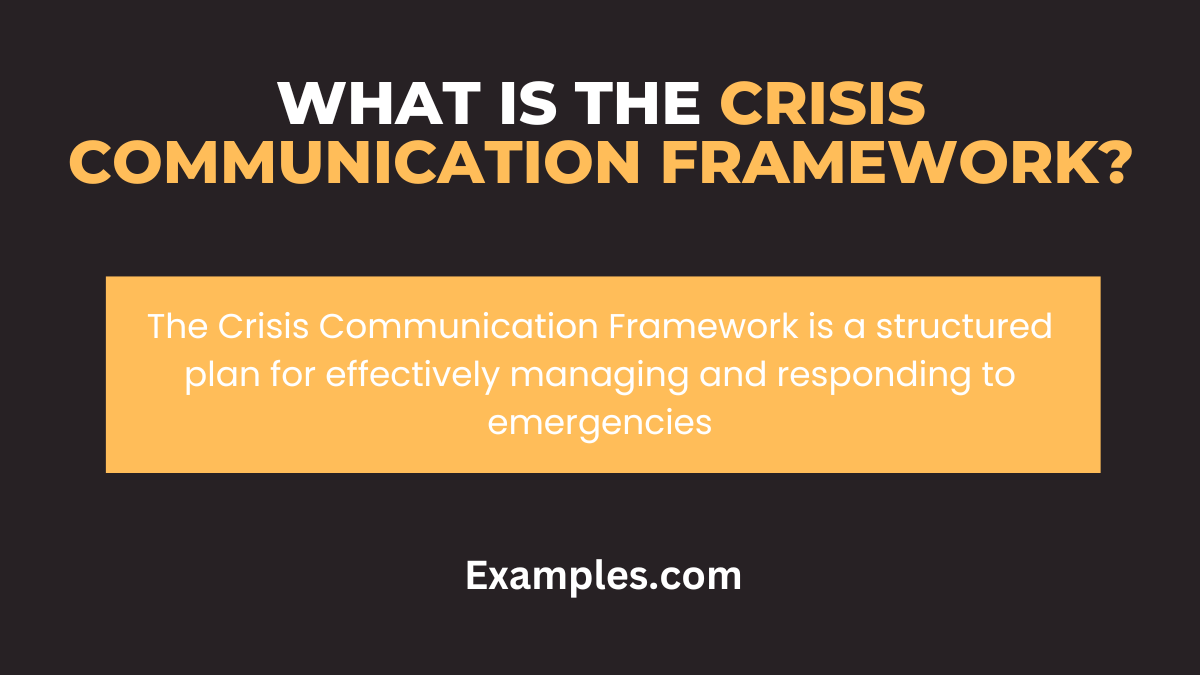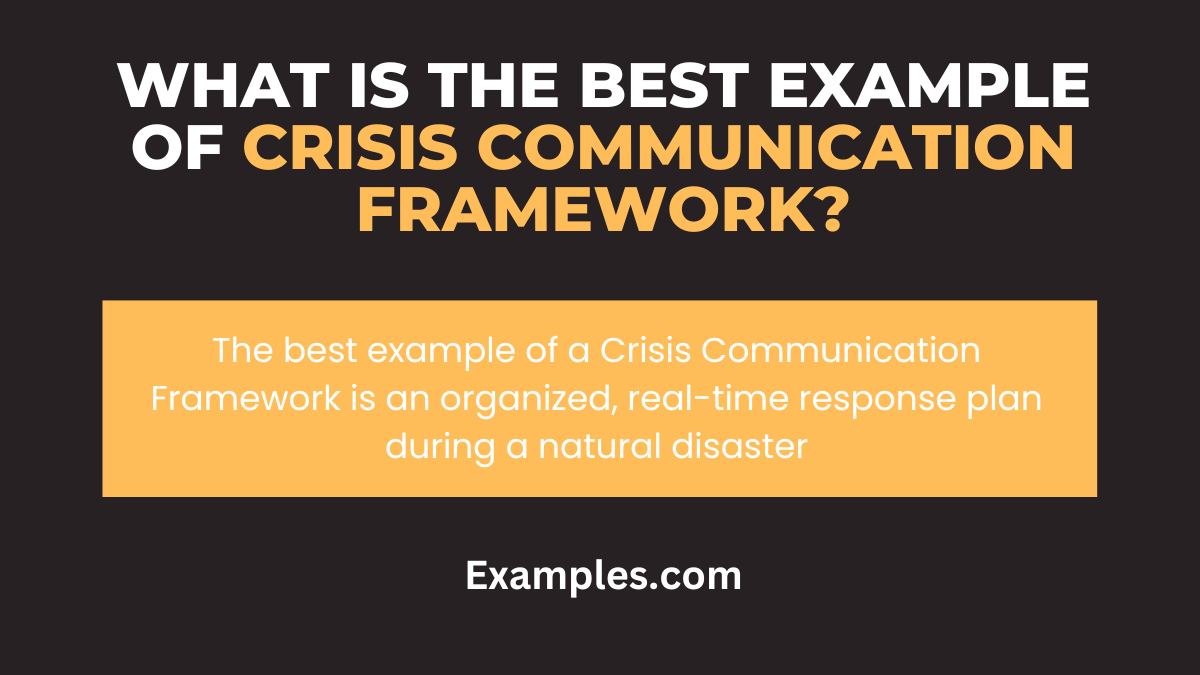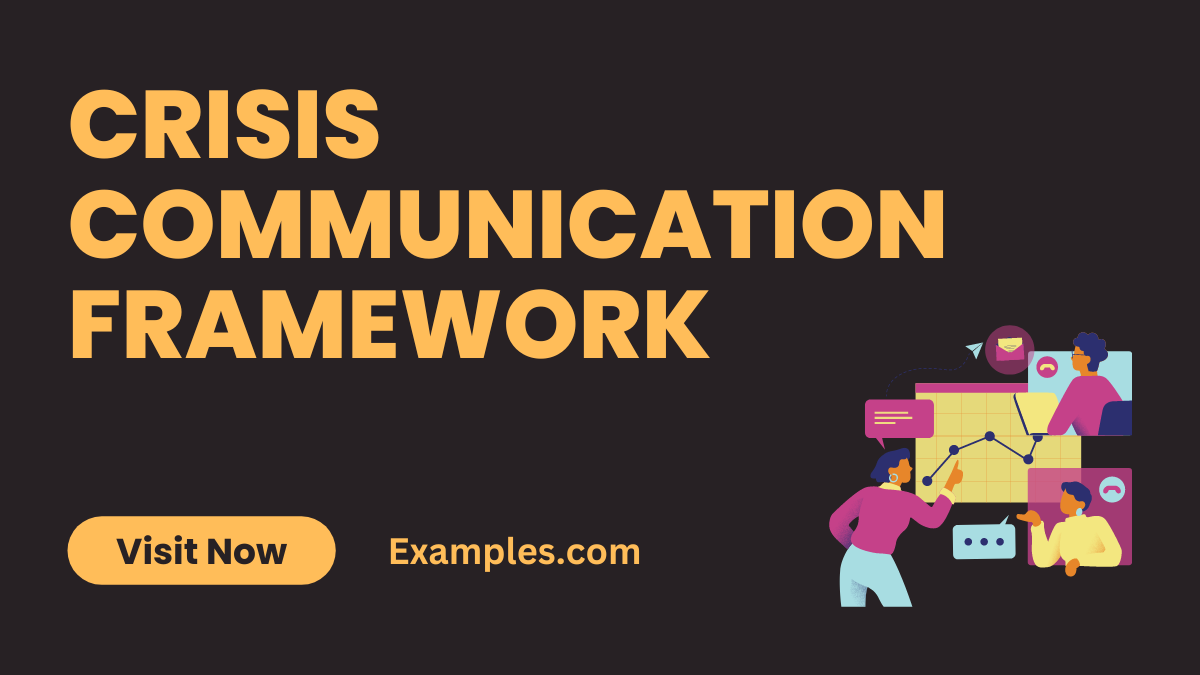Crisis Communication Framework
Unlock the potential of effective crisis management with our complete guide to the Crisis Communication Framework. In today’s fast-paced and interconnected world, understanding and implementing a robust crisis communication plan is vital. This guide offers a thorough overview, equipping you with the knowledge and tools to navigate through challenging times. From identifying key strategies to understanding the nuances of stakeholder engagement, our comprehensive guide ensures that you’re prepared for any crisis, big or small.
What is the Crisis Communication Framework?

Crisis Communication Framework is a structured approach used by organizations to communicate effectively during a crisis. It includes strategies for rapid response, transparency, consistent messaging, and stakeholder engagement, ensuring factual accuracy and empathy in communication.
What is the Best Example of Crisis Communication Framework?

The best example of a Crisis Communication Framework can be seen in how major corporations handle product recalls. They quickly acknowledge the issue, provide clear instructions, and maintain transparency throughout the process to regain public trust.
15 Plans of Crisis Communication Framework

The “Plans of Crisis Communication Framework” provides a comprehensive guide for organizations to effectively prepare for, respond to, and recover from crises. It encompasses a range of strategies and actions aimed at managing communications before, during, and after crisis situations. This framework is essential for maintaining trust, controlling narratives, and ensuring organizational resilience in challenging times.
- Establishing a Crisis Management Team: Form a dedicated team responsible for crisis communication, ensuring representation from various departments.
- Risk Assessment and Identification: Regularly identify potential crises and assess their impact.
- Developing a Communication Plan: Create a detailed plan outlining communication strategies for different crisis scenarios.
- Training and Simulation: Conduct regular training sessions and simulations for the crisis management team.
- Stakeholder Analysis: Identify and understand the needs and expectations of key stakeholders.
- Message Development: Craft clear, concise messages tailored to different audiences and crisis types.
- Media Relations Plan: Develop strategies for interacting with the media during a crisis.
- Internal Communication Channels: Establish reliable channels for internal communication among team members.
- External Communication Channels: Determine the most effective channels for external communication with the public and stakeholders.
- Monitoring and Intelligence Gathering: Continuously monitor the situation and gather intelligence to inform decision-making.
- Legal and Regulatory Compliance: Ensure all communications comply with legal and regulatory requirements.
- Resource Allocation: Allocate necessary resources for effective crisis communication.
- Digital and Social Media Strategy: Include strategies for digital and social media engagement.
- Feedback and Adaptation: Implement a system for receiving and incorporating feedback during a crisis.
- Post-Crisis Analysis: Conduct a thorough analysis after a crisis to improve future responses.
Stages of Crisis Communication Framework
- Preparation: This initial stage involves developing a crisis communication plan, conducting risk assessments, and training team members. Preparation is crucial for ensuring a rapid and effective response when a crisis occurs.
- Identification: Recognizing a crisis quickly is key. This stage involves monitoring for potential crises and identifying when an actual crisis has begun. It includes understanding the nature and scope of the crisis.
- Response: Once a crisis is identified, the response stage kicks in. Here, the focus is on communicating effectively with stakeholders, managing media relations, and disseminating accurate and timely information.
- Management: This stage is about controlling the narrative and mitigating the impact of the crisis. It involves ongoing communication efforts, stakeholder engagement, and decision-making based on evolving circumstances.
- Recovery and Learning: Post-crisis, organizations need to evaluate their response, update their crisis communication plan based on lessons learned, and work on rebuilding trust and reputation.
Techniques of Crisis Communication Framework
- Clear and Concise Messaging: Deliver straightforward, honest messages to maintain credibility and trust among stakeholders.
- Rapid Response Mechanism: Implement protocols that enable a swift response to crises, minimizing information vacuums and speculation.
- Stakeholder Prioritization: Identify and prioritize key stakeholders, tailoring communication strategies to meet their specific needs and concerns.
- Media Relations Management: Engage with media effectively, providing them with accurate information and updates to shape public perception positively.
- Digital Communication Tools: Utilize social media and other digital platforms for real-time updates and to monitor public sentiment and feedback.

Importance of Crisis Communication Framework
- Maintains Reputation: A robust framework helps preserve and protect the organization’s reputation during and after a crisis.
- Builds Trust: Effective crisis communication builds trust with stakeholders, demonstrating transparency and accountability.
- Reduces Speculation: Providing timely and accurate information reduces rumors and speculation, which can exacerbate a crisis.
- Facilitates Decision Making: A well-structured framework supports better decision-making by providing clear protocols and guidelines.
- Promotes Resilience: Organizations with strong crisis communication frameworks are more resilient, able to recover more quickly and learn from crises.
A well-executed Crisis Communication Framework is essential in navigating turbulent times. Following the provided guide and tips ensures effective communication during crises. Remember to prioritize transparency, timely updates, and empathy in your communication strategy. By doing so, you can effectively manage and mitigate the impact of crises while maintaining trust and credibility with your audience.



